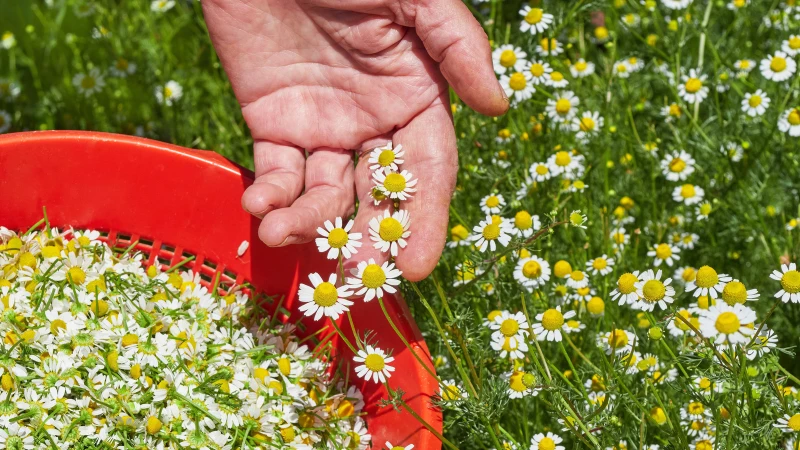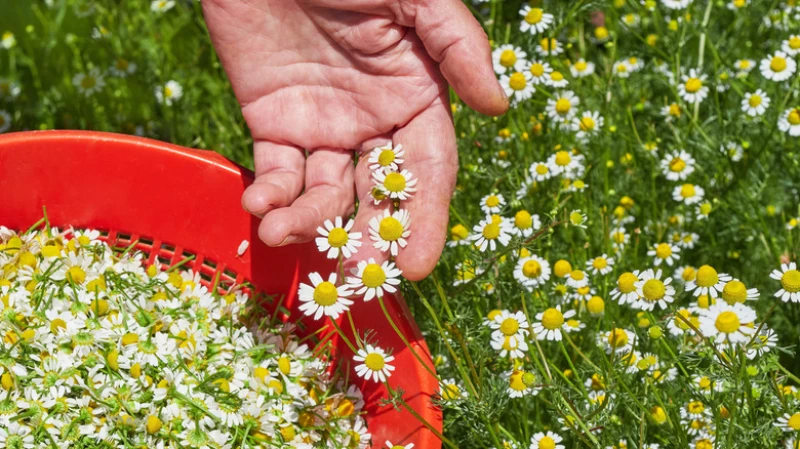Chamomile is a beloved plant and a great addition to herb and tea gardens, but anyone trying to purchase some for their garden will quickly realize there is more than one species (and genera) of plants that go by the name "chamomile." Both Roman chamomile (Chamaemelum nobile) and German chamomile (Matricaria recutita) are commonly referred to as chamomile. While they can both make excellent teas, they differ in many ways. Which plant is the best option for your garden depends on your specific needs, as the two plants differ in terms of longevity, growth habits, and uses.
German and Roman chamomile both produce beautiful daisy-like flowers with a yellow center and white petals. The dried flowers can be used to make chamomile tea, an iconic drink that purportedly promotes sleep and relaxation. Both plants also have delicate fern-like foliage that is almost as beautiful as the flowers. There's no wonder that both types of chamomile are so popular in many gardens.
Despite their similar appearances and uses, German and Roman chamomile differ significantly. While Roman chamomile is a perennial that will come back year after year in zones 4 through 9, German chamomile is an annual that you will need to replant yearly. Roman chamomile is low-growing and prone to spreading aggressively. German chamomile, on the other hand, can quickly grow up to 3 feet tall and is a bushier plant.
Despite their differences, both plants thrive in full sun, benefit from well-draining soil, and are generally problem-free. As they have relatively shallow roots, your chamomiles may need additional water during dry periods, but they can also be prone to root rot with excessive water. Neither type of chamomile requires additional fertilizing, and both can thrive in poor soils. While both types can be grown as potted indoor plants, chamomile might not be the ideal houseplant for people with allergies, as it is related to ragweed.
Chamomile, known for its soothing properties, comes in two main types - Roman chamomile and German chamomile. Both varieties are loved by pollinators and are rarely damaged by deer. Roman chamomile emits a sweet fragrance that naturally deters wasps, while German chamomile essential oils have shown effectiveness in repelling fire ants and mosquitos. German chamomile also serves as a great companion plant in gardens, potentially keeping cucumber beetles at bay.








